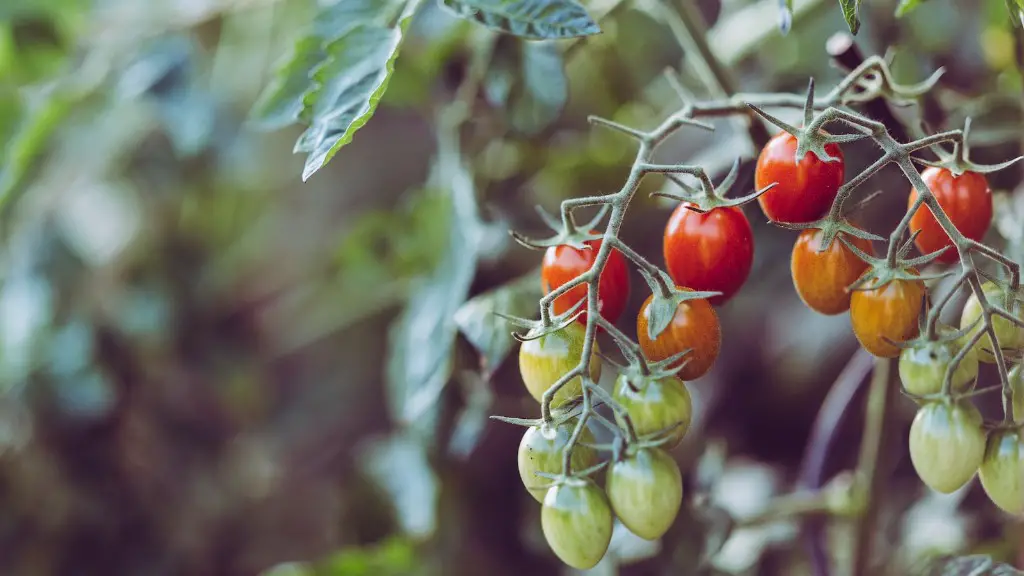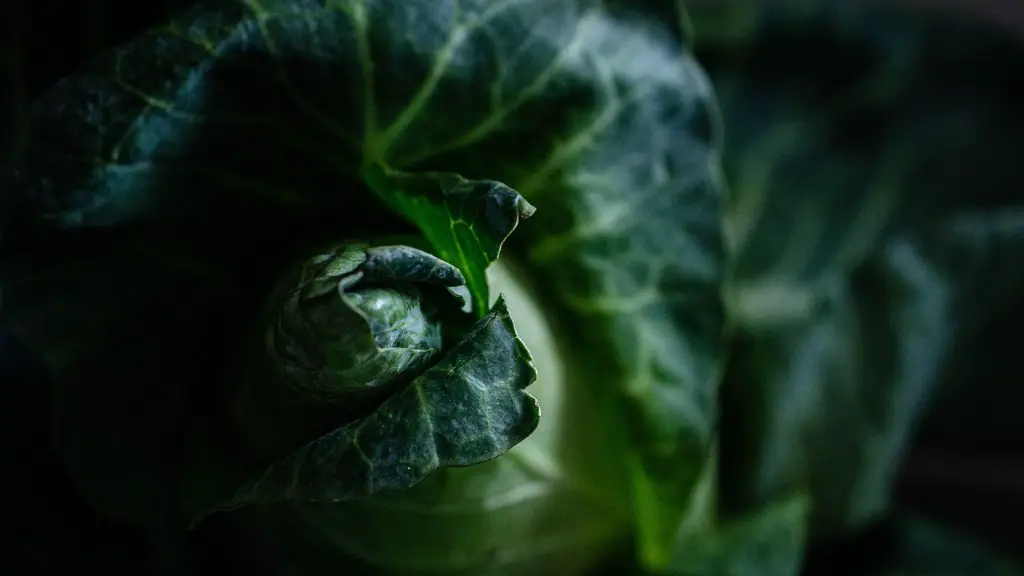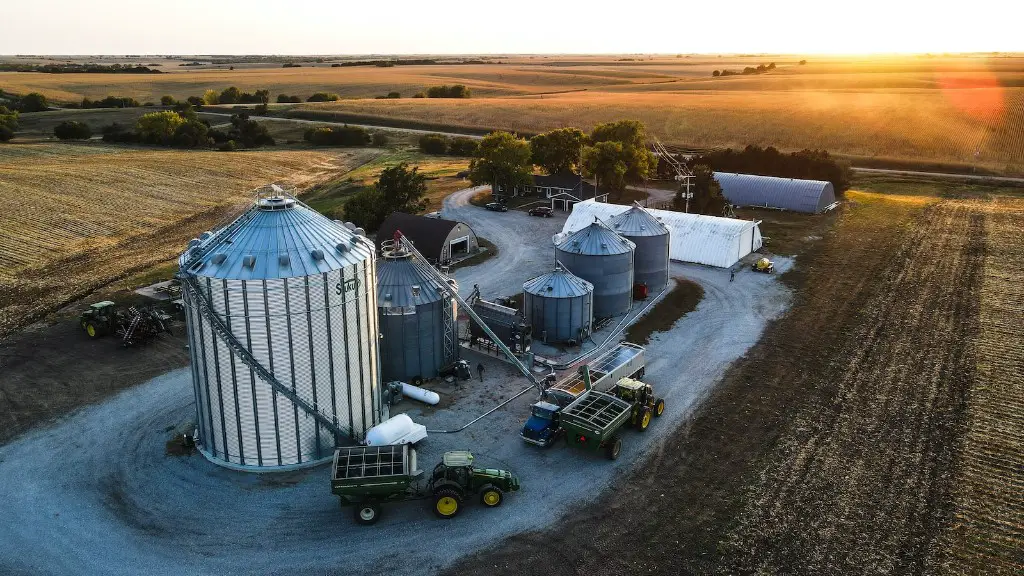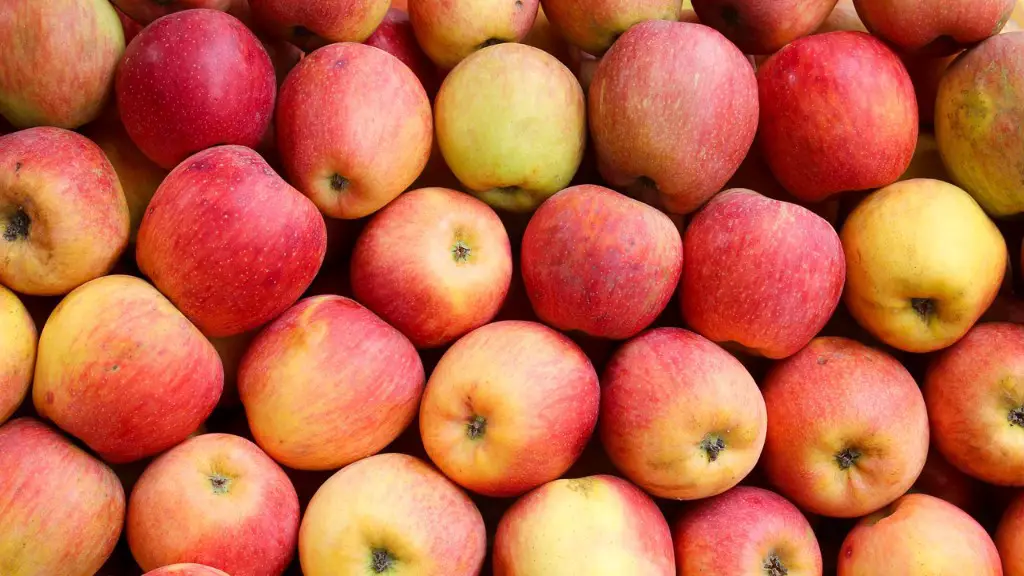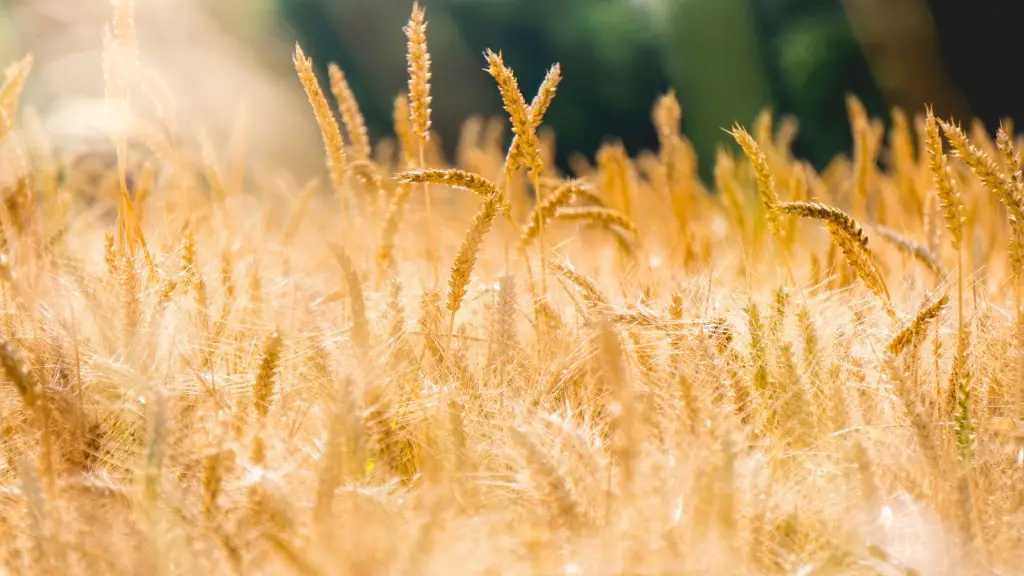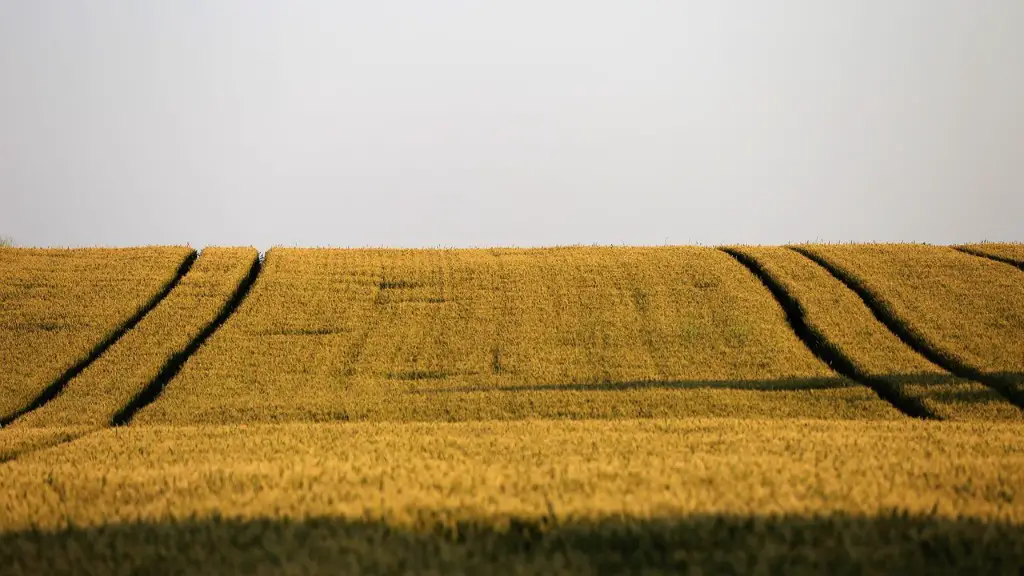Agricultural pollution is a major contributing factor to the global pollution crisis. Generally speaking, estimates of agricultural pollution may vary from region to region, but globally, it estimated that 25 to 35 percent of total pollution is attributed to agricultural practices. This includes air, soil, and water pollution caused by fertilizer and pesticide use, as well as runoff from animal feeding areas, which can lead to eutrophication in nearby bodies of water. Additionally, some of the more harmful, overlooked sources of agricultural pollution include burning of agricultural products, abandoned equipment, and fuel spills.
Fertilizers, pesticides, and other agrochemicals are some of the primary sources of agricultural pollution. When used correctly, these chemicals can help to increase crop yields substantially. Unfortunately, when improperly applied or used in excess, these agrochemicals can leach into surface and subsurface waters, leading to significant water pollution. Soil pollution resulting from the use of agrochemicals is also an issue.
The use of crop-protection chemicals can lead to air pollution, particularly in the form of air contamination. Pesticides, herbicides, and other volatile organic compounds (VOCs) can escape into the atmosphere, leading to smog and other forms of air pollution. Additionally, the burning of agricultural waste, as well as the burning of fossil fuels to power agricultural equipment also contributes to agricultural air pollution.
Animal manure is also an important contributing factor to agricultural pollution. Runoff from poorly managed animal feeding areas can lead to excessive nutrient loading in bodies of water, such as streams, rivers, and lakes. This can cause eutrophication, which can lead to algal blooms, oxygen depletion, and even fish and wildlife death. Additionally, improperly managed animal waste can also lead to the spread of diseases.
Agricultural runoff from poorly managed animal feeding areas is also a significant source of agricultural pollution. Runoff from animal feeding areas can contain a diverse range of pollutants, from fertilizer and manure pollutants, to antibiotics and antifungal agents used to treat animal diseases. This can lead to significant pollution of nearby bodies of water, as well as nearby groundwater systems.
Finally, the disposal of outdated, discarded, or abandoned agricultural equipment can also lead to significant agricultural pollution. From fuel spills to the contamination of nearby soils and water systems, this source of pollution can be extremely damaging if not mitigated properly.
Soil Contamination
Soil contamination is another form of agricultural pollution. It is caused by chemicals used in farming, such as fertilizers, pesticides, and herbicides. These chemicals can leach into the soil, contaminate groundwater supplies, as well as reduce the overall quality of the soil. It is important to properly manage the use of these chemicals, as well as properly dispose of hazardous agrochemical containers to mitigate the potential for soil contamination.
Soil contamination can also be caused by the over-application of manures and fertilizers, especially when used on fields in close proximity to one another. This can lead to contamination of soils, as well as nearby water systems and groundwater aquifers. Improper storage and disposal of animal wastes, as well as of pet wastes, can also lead to soil contamination.
Soil erosion is another major source of soil contamination. This is caused by the loss of organic matter, topsoil, and vegetation, which can lead to an increase in soil temperatures, salinization, and the leaching of pollutants into the soil. This can lead to a decrease in soil fertility and overall soil health.
Finally, the improper disposal of expired, damaged, or outdated agricultural equipment can also lead to serious soil contamination. This can include the contamination of soils with heavy metals, hydrocarbons, and other hazardous materials.
Air Contamination
Air contamination from agricultural sources is yet another major source of agricultural pollution. The burning of agricultural waste, such as crop stubble, can lead to air pollution, in the form of particulate matter, volatile organic compounds (VOCs), and other hazardous materials. Outdated and abandoned agricultural equipment can also lead to air pollution from the release of hazardous materials and emissions from the burning of fuel.
The use of crop protection chemicals can also lead to air contamination. These include the use of pesticides, herbicides, and other agrochemicals. When used in excess, or applied incorrectly, these chemicals can lead to the release of VOCs and other pollutants into the atmosphere, which can lead to smog and other forms of air pollution.
Livestock production, particularly factory-farming operations, are also significant sources of air contamination. Animal feedlots, in particular, can lead to air pollution from the release of ammonia, methane, carbon dioxide, and other greenhouse gases, as well as particulate matter, volatile organic compounds, and bacteria.
Finally, the runoff from animal feeding areas, when managed poorly, can also lead to air pollution. This pollution is caused by the release of ammonia and other greenhouse gases, as well as particulate matter and pathogens.
Water Contamination
Water contamination from agricultural sources is a significant source of global pollution. Runoff from animal feeding areas can lead to excessive nutrient loading in nearby bodies of water, leading to eutrophication. Poorly managed animal waste can also lead to water contamination, as well as the spread of water-borne diseases.
Fertilizers and pesticides, when used improperly or in excess, can lead to water contamination, as these chemicals can leach into surface and subsurface waters. This can lead to algal blooms, fish and wildlife death, as well as other serious water contamination issues.
Soil erosion can also lead to water contamination. This is caused by the loss of organic matter and topsoil, which can lead to water contamination from the leaching of pollutants. Additionally, improper drainage of farmland and excessive irrigation can lead to water contamination.
The use of contaminated water for agricultural purposes can also lead to water contamination. From contaminated surface water and subsurface water sources, to urban runoff, agricultural water contamination can be extremely damaging if not addressed properly.
Finally, the burning of agricultural waste, as well as the improper disposal of hazardous materials and untreated animal waste, can also lead to water contamination.
Climate Change
Climate change is a major repercussion of agricultural pollution. The burning of agricultural waste, the overuse of crops, the burning of fossil fuels to power agricultural equipment and other activities related to agricultural production, can all lead to the release of greenhouse gases into the atmosphere. This can lead to a higher average global temperature, leading to significant climate change.
The use of crop-protection chemicals can also contribute to climate change. These chemicals can lead to the release of VOCs and other hazardous materials into the atmosphere, leading to smog and other forms of air pollution. This can also lead to climate change, as smog and other pollutants can trap heat in the Earth’s atmosphere.
Livestock production is another major contributor to climate change. The release of greenhouse gases from factory farming operations is a significant source of air pollution, leading to the trapping of heat in the Earth’s atmosphere, and, ultimately, climate change.
Finally, changes in land use, such as deforestation, can lead to substantial reductions in the amount of CO2 normally taken up by forests and vegetation. This can lead to further global warming, as the amount of CO2 in the atmosphere increases.
Conclusion
To summarize, agricultural pollution is a major source of global pollution and a mounting threat in the fight against climate change. Estimates of agricultural pollution may vary from region to region, but globally, it estimated that 25 to 35 percent of total pollution is attributed to agricultural practices. From air, soil, and water pollution caused by agrochemicals, to air and water contamination from animal manure, agricultural pollution is an issue that must be addressed with urgency and vigilance.
